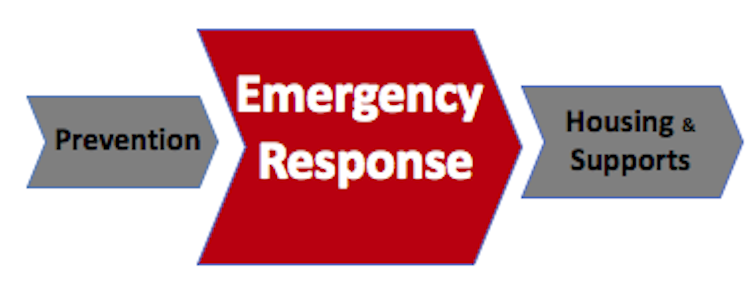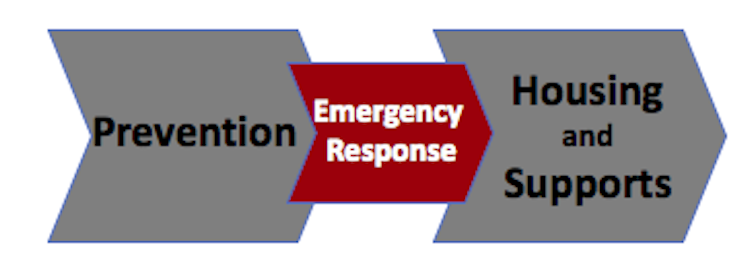Look beyond crisis accommodation so people like Courtney Herron aren't homeless in the first place
- Written by David MacKenzie, Associate Professor, School of Psychology, Social Work & Social Policy, University of South Australia
When the battered body of 25-year-old Courtney Herron was found in Royal Park in Melbourne on Saturday, May 25, it was not the first time a homeless person had been killed in Melbourne. But, as with the Jill Meagher murder in 2012, this particular case has shocked the community and, according to informed sources, rattled the Victorian government.
Courtney Herron had been couch-surfing and sleeping rough. She was experiencing mental health issues and trying to deal with drug addiction. Her shocking death, an act of violence against a young woman, reminds us of the vulnerability of rough sleeping, and the disturbing and continuing reality of youth homelessness.
Some advocates are calling for a renewed focus on rough sleeping and more crisis accommodation in the major cities where homeless people are most visible. Such advocacy is well-intentioned but deeply misguided.
Read more: Homelessness soars in our biggest cities, driven by rising inequality since 2001
We need sustained housing strategies, not quick fixes
Similar proposals have been raised before. In the early 1990s, there were calls for the empty 11-storey Prince Henry Hospital complex on St Kilda Road to be turned into a shelter for the homeless.
The spectre of a new generation of homelessness shelters haunted a city in which the dormitory shelters such as “The Gill” had only recently been decommissioned. Fortunately, experienced social workers came forward to advise Melbourne City Council not to bow to loud but misguided advocacy. The proposed Prince Henry Shelter complex did not happen and the hospital was demolished in 1994.
Of course, there needs to be an efficient and effective response to rough sleeping in the Melbourne CBD and in every other capital city. Only last year Victoria’s Homelessness and Rough Sleeping Action Plan was launched, backed by a A$9.8 million Towards Home package, “to provide housing and support to an increasing number of people sleeping rough across inner Melbourne”.
The fact is that the goal of housing rough sleepers has not been achieved, despite many attempts over the years. Could it be that a kneejerk symptomatic response from government, which so often falls short of strategic action, is part of the problem?
Developing more crisis accommodation seems to make common sense, which is probably why such proposals continue to be raised. Crisis accommodation supports people who are currently homeless. It has an immediate and short-term impact, but cannot reduce homelessness.
So what needs to be done?
If we are seriously to reduce homelessness in a sustained way, counterintuitive thinking and action are required, not simplistic “common sense”.
Pouring more public funds into crisis accommodation simply treats the symptoms of the problem. But it does not contribute to a reformed service system that can begin to make serious inroads into reducing the problem. According to the National Report Card on Youth Homelessness, issued in March 2019, two of the four key policy imperatives are:
- to stem the flow of young people into homelessness or early intervention
- to get young people out of homelessness as quickly as possible by providing rapid rehousing options and an accessible and affordable youth housing sector for young people who have become homeless and have nowhere to return to.
Read more: Youth homelessness efforts get a lowly 2 stars from national report card
The current service system is mostly a crisis response. Early intervention capacity is grossly underdeveloped and youth housing options are limited.
 The current system relies heavily on crisis-driven emergency responses, and under-resources ongoing prevention and housing services.
Author provided
The current system relies heavily on crisis-driven emergency responses, and under-resources ongoing prevention and housing services.
Author provided
In general, we don’t need more crisis services, but we do need much greater early intervention and youth housing capacity.
 The weighting of services to prevent homelessness and house people should look more like this in the future.
Author provided
The weighting of services to prevent homelessness and house people should look more like this in the future.
Author provided
While we don’t know the detailed circumstances of how Courtney Herron came to be sleeping rough, there would have been many opportunities to avert her descent into homelessness. But, even if that were not practicable, she should never have been left to sleep out in Royal Park. The sad, most likely scenario is that her death will not bring on strategic reform but only more short-term crisis responses and a push to get more homeless people off the streets quickly.
On the other hand, this tragic death could be a catalyst for real change. We need to do much more. More to the point, we could and should do so much better.
Authors: David MacKenzie, Associate Professor, School of Psychology, Social Work & Social Policy, University of South Australia



